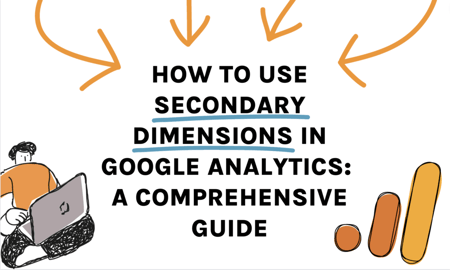Enhance Your Search Engine Optimization Campaigns with Secondary Dimensions: A Comprehensive Guide
Enhance Your Search Engine Optimization Campaigns with Secondary Dimensions: A Comprehensive Guide
Blog Article
Optimize Your Coverage Precision With Additional Dimensions
Secondary dimensions supply a portal to enhancing reporting accuracy by giving a multifaceted lens via which to view data. As we get started on this journey of leveraging second measurements, the landscape of reporting precision beckons with pledges of improved quality and tactical decision-making.
Significance of Secondary Measurements
Using additional dimensions is important for improving the deepness and granularity of reporting insights in data evaluation. By incorporating second dimensions right into information analysis procedures, services can acquire a much more comprehensive understanding of their efficiency metrics. These additional dimensions provide an even more detailed view of the key data, permitting a much more nuanced interpretation of patterns and patterns. Additional measurements allow experts to sector and filter information based upon specific requirements, giving a more customized and targeted analysis.
In addition, additional dimensions help in identifying relationships and relationships that might not be right away evident when analyzing data with only main dimensions. This much deeper level of insight can bring about even more informed decision-making and strategic preparation within a company. By leveraging additional measurements properly, services can reveal surprise opportunities, identify areas for renovation, and enhance their general performance.
Carrying Out Additional Measurements
To include second dimensions successfully right into information analysis procedures, organizations have to embrace a structured approach that lines up with their reporting purposes and analytical goals. Applying additional dimensions entails picking the appropriate measurements that provide deeper understandings into key data metrics.
Furthermore, businesses need to ensure that the selected secondary measurements are appropriate to the key data and supply purposeful context without triggering info overload. Executing additional dimensions likewise requires defining clear logical concerns that the added measurements will help respond to. By structuring the implementation process around these considerations, services can take full advantage of the worth obtained from second dimensions and enhance the accuracy and depth of their reporting.
Analyzing Information With Additional Measurements

One secret facet of assessing information with second measurements is to make certain that the picked dimensions line up with your certain logical goals. Choosing the right secondary dimensions can provide context and nuance to your main information metrics, allowing you to draw even more precise final thoughts and make informed choices based upon the insights obtained.
Moreover, leveraging additional measurements properly can help in recognizing outliers, understanding the impact of different variables on your key performance signs, and gaining a thorough sight of your information landscape. By delving right into information with secondary dimensions, you can boost the depth and quality of your evaluation, bring about more durable coverage and workable end results.

Enhancing Insights With Secondary Dimensions
Checking out data web link through secondary dimensions not only grows evaluation yet additionally amplifies the possibility for discovering important insights that can dramatically improve reporting precision. By adding additional dimensions to your records, you can get an extra comprehensive understanding of the partnerships in between different information points. When evaluating information with key dimensions alone., this improved point of view enables you to identify patterns, patterns, and connections that might have been overlooked.

Essentially, leveraging additional dimensions empowers you to remove richer insights from your data, enabling you to make even more enlightened decisions and maximize your reporting precision.
Finest Practices for Secondary Dimensions
Making use of additional dimensions effectively calls for mindful factor to consider of key techniques to improve data evaluation and reporting precision. When executing additional measurements, it is important to straighten them with your primary metrics to obtain meaningful understandings.
An additional crucial technique is to trying out various combinations of secondary and main measurements to uncover unique correlations and patterns within your information. This iterative technique can reveal valuable insights that may have been forgotten otherwise. Furthermore, it is essential to go to the website routinely evaluate and refine your secondary dimension selections to guarantee they remain pertinent and straightened with your evolving reporting demands.
In addition, recording the reasoning behind your option of additional dimensions can provide context for future analysis and help with partnership within your group. By complying with these best methods, you can make the most of the efficiency of additional measurements in improving your coverage accuracy and driving educated decision-making.
Final Thought
Including secondary measurements in data evaluation is vital for making best use of reporting precision and gaining deeper insights right into efficiency patterns. Applying finest practices for additional measurements improves the deepness of evaluation and enhances the relevance of reporting end results.
Furthermore, secondary dimensions help in identifying correlations and partnerships that might not be promptly evident when assessing information with just key measurements. Applying second dimensions includes selecting the best dimensions that provide much deeper understandings right into primary data metrics. Implementing second measurements likewise requires defining clear logical concerns that the extra dimensions will certainly assist respond to.When examining data with secondary measurements, it is essential to concentrate on removing important insights that enhance main data metrics. By including second dimensions into your analysis, you can reveal patterns, fads, and relationships that might not be evident when looking at the data from a key measurement alone.
Report this page